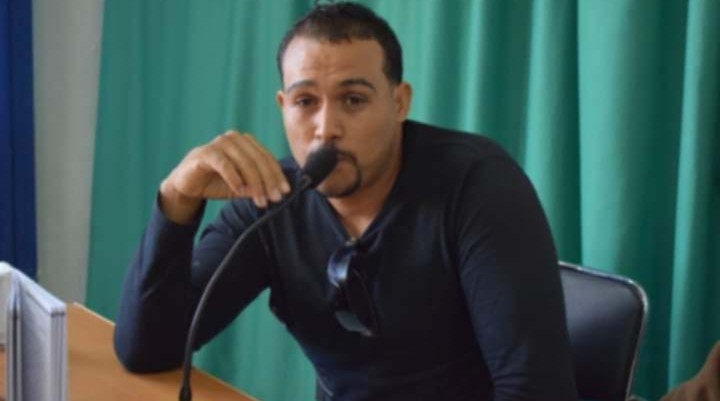MOHAMED RAHAL
MODERNITÀ NELLA POESIA POPOLARE
La modernità nella poesia araba contemporanea è diventata una realtà tangibile nel campo della creazione letteraria, dopo le polemiche di rifiuto praticate dal movimento classico. Così, è emersa una nuova fase per rinnovare la struttura artistica della poesia.
Superando le trasformazioni portate dalla Scuola Romantica, dai poeti della diaspora, dalla Scuola Realista e dal movimento Simbolista, che hanno scosso le fondamenta e i componenti del patrimonio poetico. Lo sviluppo artistico è stato accompagnato da un altro sviluppo concettuale, il più importante dei quali è il concetto di resistenza, che è passato da discorsi diretti che invocavano la rivoluzione e la liberazione a una nuova espressione artistica basata su una visione. Poiché la poesia affina la poesia popolare che affronta i problemi delle società e dei popoli e rimane un patrimonio popolare tramandato di generazione in generazione, ciò che viene chiamato patrimonio popolare esprime la realtà della verità. Il rifiuto della realtà si mescola con l'esperienza personale del poeta sotto forma di sofferenza artistica interna, dalla quale nasce un testo artistico resistente, indipendentemente dal fatto che riguardi ciò che egli vive o meno. Non mira tanto al cambiamento materiale quanto alla costruzione di una civiltà resistente. Abbiamo studiato la resistenza nella poesia araba contemporanea attraverso questo approccio e ci siamo basati su di esso; descrittivo e comunicativo, studiandolo e rivelandone i segreti nei suoi metri e obiettivi, analizzando i suoi livelli semantici nei suoi significati e come i suoi componenti cambiano di generazione in generazione. Si rivolge alla poesia moderna e ai suoi stili che assomigliano allo zajal popolare in Marocco, ricco di simbolismo. Gli artisti si sono interessati a reinterpretare gli inni dei santi giusti, come la poesia Al-Fayashiya del santo giusto che visse nell'Iraq del XVI secolo.
Viaggiò in Algeria per eseguire la melodia accompagnata da strumenti musicali, e così passò dal patrimonio popolare alle canzoni musicalmente avanzate del genere raï. Le poesie dei santi giusti Sidi Lakhdar Ben Khalouf, che segnarono l'inizio di un nuovo tipo di poesia popolare, furono riprese da Mustafa Ben Ibrahim, autore del capolavoro Yamina; Abdelkader El Khalidi nel suo capolavoro Bakhta; e Mohamed Ben Saghir, le cui poesie furono trasmesse da Cheb Khaled e Cheb Mami e divennero conosciute in tutto il mondo. Altri hanno immortalato poesie che hanno accompagnato la rivoluzione della resistenza algerina e le cui poesie sono diventate famose a livello mondiale. Questo dialetto è stato ereditato dai loro antenati e arricchito con stili che hanno prodotto Mulla, Tariq, Malzuma e poesia popolare. Le poesie di Ahmed bin Abdullah, Hajj Younis bin Sultan, Saad bin Al Hajj e Ahmed bin Saad non erano solo poesie popolari, ma includevano anche ricordi, detti e lodi di persone giuste, come Abdelkader Al Jilali e Ubaid Al Sharif. Hanno lasciato un grande patrimonio popolare a Bir Al Ater, tramandato di generazione in generazione. Lo conosciamo nei matrimoni, nei festival e nelle conferenze per decifrarlo e capire da dove provengono queste melodie. In Tunisia, si è analizzato il significato portato da un'arte in sé chiamata arte popolare. Il diwan popolare è quello che ha rivitalizzato le poesie di Ahmed Al-Barghouti, Mohammed Al-Barghouti e Mohammed Al-Sagheer Al-Sassi, l'inizio dell'arte popolare. Era interessato alle canzoni dei giusti e seguiva il ritmo. Nei paesi del Maghreb, fino alla lontana Libia e all'ambiente desertico, i poeti lo hanno collegato alla descrizione, creando descrizioni creative dell'amore nella poesia popolare, in canzoni che ne trasmettono i significati: "I tuoi occhi sono deserti senza eguali". Le usanze lo hanno portato alla poesia colloquiale in Egitto, e i versi della poesia colloquiale che interessavano gli anziani della generazione più vecchia risalgono alla storia dell'Andalusia, dove la poesia colloquiale popolare iniziò da quel tempo, poiché i poeti erano i compagni dei re, recitando poesie in cambio di denaro e tenendo dibattiti poetici in cui i metri differivano, e quindi la lingua classica era diversa. Piazza Ibn Arous è solo l'inizio. Poi venne la poesia di Abdullah Al-Nadim, poi Bayram Al-Tunisi, che portò il cambiamento e portò la bandiera della pura poesia popolare. Poi vennero i palazzi, dove la poesia mondiale si è raccolta nel corso dei secoli e ha dato vita a nomi prestigiosi come Salah Jahin, Fouad Haddad, Ahmed Fouad Negm e Abdel Rahman El Abnoudi, le cui poesie hanno raggiunto fama internazionale grazie alla musica del quintetto di Mohamed Mounir.
La traduzione ha fatto molta strada e ha aggiunto a questo qualcosa di cui sono molto felice.
MOHAMED RAHAL

